First ATX12VO Consumer Motherboard: The ASRock Z490 Phantom Gaming 4SR
by Dr. Ian Cutress on May 5, 2020 12:00 PM EST- Posted in
- Motherboards
- Intel
- ASRock
- Z490
- ATX12VO
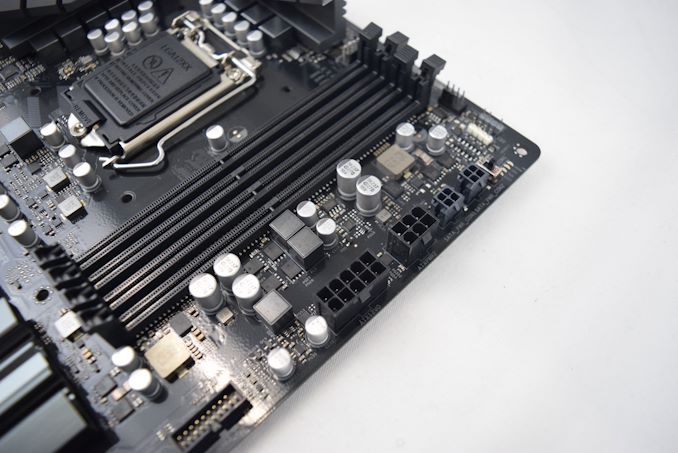
One of the biggest legacy characteristics of the modern PC is how the power supply connects to the motherboard – not only is it one big chunky 24-pin power connector in to the board, but it has to supply all of the relevant voltages, including 12 V, 5 V, and 3.3 V. Over the last two decades, standards that used 5 V and 3.3 V have almost disappeared, except for a last few legacy applications. Despite that, we’ve been lumbered with the old ATX12V standard for this. However recently the ATX12VO standard was announced, requiring only 12 V into the motherboard and other voltages to be derived from it on the board. This also allows the power supply to be more efficient and compact, with a smaller connector. At the time, given the ubiquity of the ATX12V standards, we were all under the impression that ATX12VO would be something for the embedded market, where the full hardware stack could be customized top-to-bottom. A blog post from Intel showcased the first consumer motherboard with the standard from ASRock, and we reached out to ASRock for more details. They have now put up a product page for this board, the ASRock Z490 Phantom Gaming 4SR.
Intel's Stephen Eastman, Platform Power Specialist
In Intel’s Blog Post, the company states that the new ATX12VO standard will help substantially with idle power of a PC, due to the single rail design not needing to cater for other voltages other than 12 V. The company states that governments will benefit a lot from this, given that the standard complies with upcoming standards for electronic efficiency in the US and Japan. It notes that while there have been single rail custom designs in the past, this new industry standard will allow vendors to unite under a single implementation. One of the key partners for this is ASRock, who state that they are Intel’s primary partner on this project.
On the face of it, the new ASRock Z490 Phantom Gaming 4SR looks very much like what a user should expect from a Z490 motherboard, with a socket, power delivery, PCIe slots, and other additional controllers. What makes it stand out is the power supply connection, as defined in the standard (or Intel reference manual).
The main power comes from the first 10-pin connector, which provides up to 288 W. For small and medium sized motherboards, this should be the only power that is needed.
Additional power for high-end motherboards that need it come from a 6-pin connector, which can provide another 288W.
Note that the 8-pin 12V CPU power is still required for the processor – the 10 pin (and 6-pin) here give power to the components on board, and the PCIe slots.
There are additional connectors for storage, for motherboards that need it. This is primarily for motherboards that use a lot of SATA connectivity, or use the motherboard to provide the power to the SATA drives or ODD units, which is particularly common in embedded systems. In the case of the ASRock board, we have four SATA connections and an M.2 slot.
What makes this perhaps a little strange is that although this new ATX12VO standard is aimed at the lower power parts of the market and the more embedded designs, ASRock has made this a full Z490 board. It supports overclocking and fast memory, it has better gold-pin plating in the DRAM slots, there’s an ALC1200 audio codec, 802.11ac Wi-Fi, and so on. That being said, the PCIe slot layout is only x16 from the CPU and x4 from the chipset, rather than an x8/x8 design.
As to when this motherboard goes on sale, we’re not quite sure – very likely it will be region limited as well. It depends on how well the power supply industry gets into gear with their ATX12VO products for consumers as well.



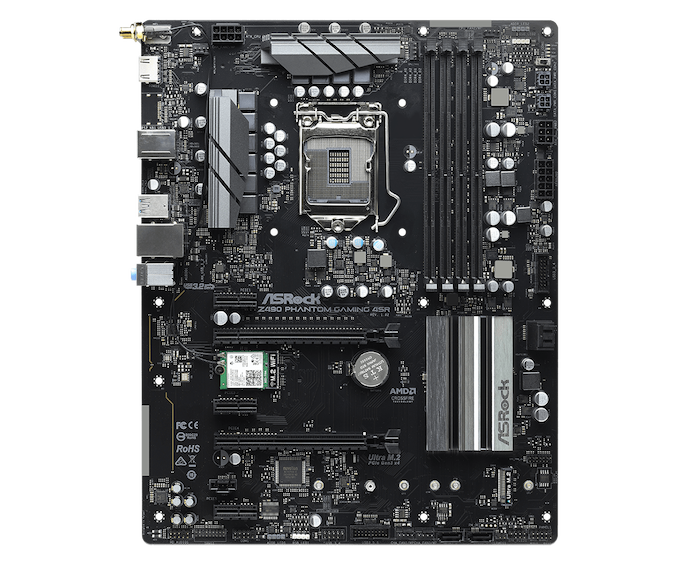
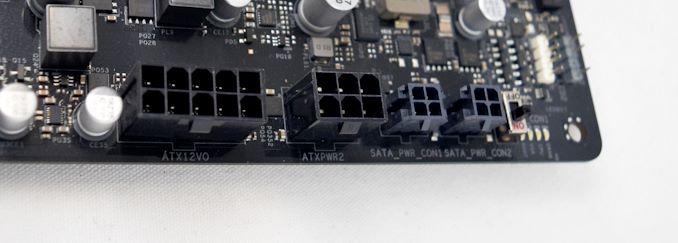
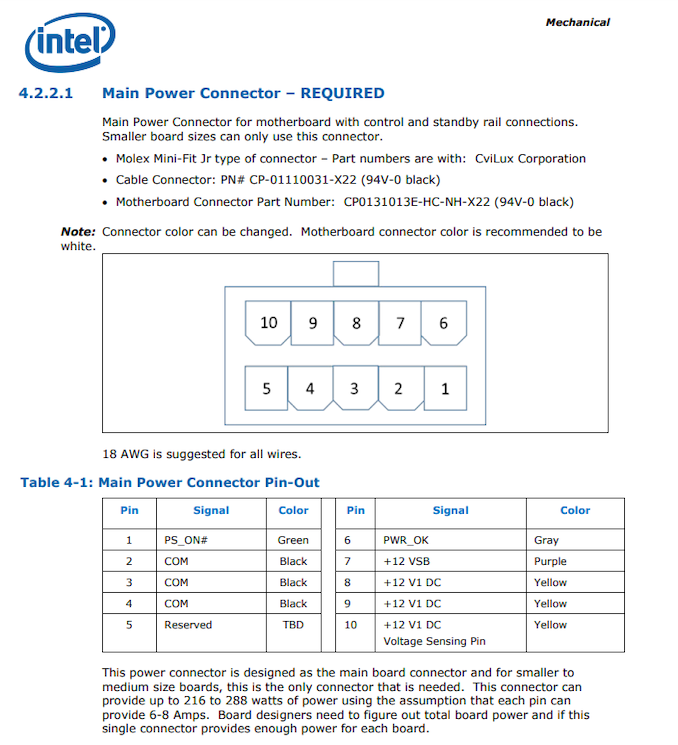

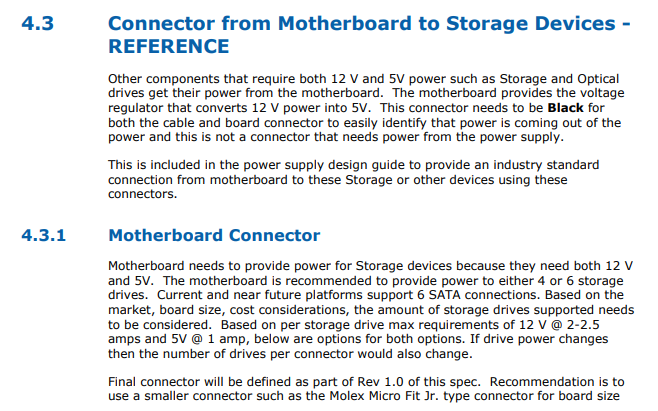
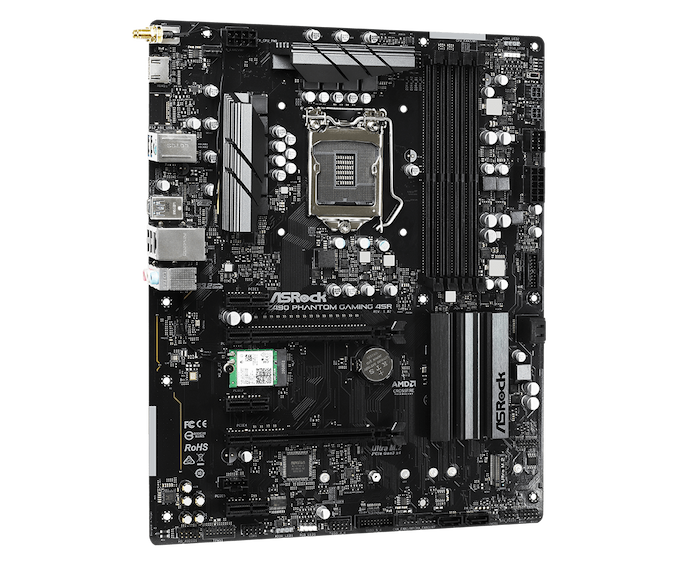








47 Comments
View All Comments
shabby - Tuesday, May 5, 2020 - link
"This also allows the power supply to be more efficient and compact, with a smaller connector."I'll bet it'll still cost more than regular atx psu's.
Operandi - Tuesday, May 5, 2020 - link
Makes sense to me. The system knows more about what minor voltages it needs (5v and 3.3v) than the PSU. Also the 24 pin ATX connector is mostly dead space and is long overdue to be replaced.Now to just define some new form factors that actually make sense
close - Wednesday, May 6, 2020 - link
Looking at this board I can't see that much space saved. It just looks more spread out. Unless it's replaced by a single smaller connector, just spreading cables throughout the case doesn't do us many favors.Slyeyay - Friday, May 8, 2020 - link
Which is why Mini-ITX boards will benefit from this the most.I mean have you seen how much space the 24 pin connector take from those boards?
Guspaz - Friday, August 14, 2020 - link
Mini-ITX boards won't work with this at all. In the photo of this board, everything to the right of the RAM slots and above the chipset heatsink is all DC-to-DC conversion circuitry. That's like a quarter the surface area of an mITX board. And the 16+4 connector with a gap between takes up roughly the same amount of space as a 24-pin connector, so no savings there.Intel is only claiming that they can fit all this on an mATX board. ITX is probably impossible without sacrifices or some sort of daughterboard sticking up off the mobo.
Guspaz - Friday, August 14, 2020 - link
Sorry, the 10+6 connector with a gap in between. It takes up almost as much space as a 24-pin due to the gap.rick_H - Wednesday, May 26, 2021 - link
I disagree. A properly designed Class D buck regulator does not produce significant heat. Yes, there will be need for two extra regulators, but the board real estate will be much smaller than the ~300 square mm saved by the 14 pins eliminated by the connector.bernstein - Tuesday, May 5, 2020 - link
at first probably, but in the long run it's going to be cheaper, because of less components & complexityikjadoon - Tuesday, May 5, 2020 - link
And I'll bet you're still paying $1000 for a 1080p Blu-Ray player. /s The cost of PSU hardware is significantly decrease:"One power supply maker told PCWorld that the move to ATX12VO should make PSUs 'drastically' cheaper to build. Jon Gerow, director of research and development for another PSU maker, Corsair, agreed costs should go down while efficiency goes up."
https://www.pcworld.com/article/3518831/how-intels...
I have zero idea why Anandtech, Gamers Nexus, etc., genuinely believed ATX12VO was relevant only to prebuilts/OEMs. OEMs already dropped 5V/3.3V PSU-based conversion years ago, i.e., every proprietary Dell PSU. The formalization of 12V-only is absolutely intended as a industry-wide shift, thus the biggest changes will be felt in the custom PC hardware market (i.e., literally only motherboards and PSUs).
No serious OEM waited until Intel updated ATX in 2019. The custom PC hardware market is the one that's a decade behind (though a shout out to the SFF/mini-ITX crowd who've made big strides).
ASRock, Corsair, etc. buy-in means ATX12VO is coming to a PC near you, i.e., the Anandtech reader. This is a good thing. We shouldn't be "scared" to move the entire industry forward if a tiny niche of customers demand to upgrade their systems but want to maintain 24-pin ATX 2.4 PSUs.
Pro-tip: nobody is forcing you to upgrade to ATX12VO today. It'll be at least another 5 years, I imagine, before ATX12VO is truly ubiquitous in the custom PC hardware space, so nobody is losing anything.
This is a proper transition, with some motherboard models and some PSU models switching to ATX12VO.
louisemunderwood - Saturday, May 9, 2020 - link
Make money online from home extra cash more than $18k to $21k. Start getting paid every month Thousands Dollars online. I have received $26K in this month by just working online from home in my part time.every person easily do this job by just open this link and follow details on this page to get started… WWW.iⅭash68.ⅭOⅯ